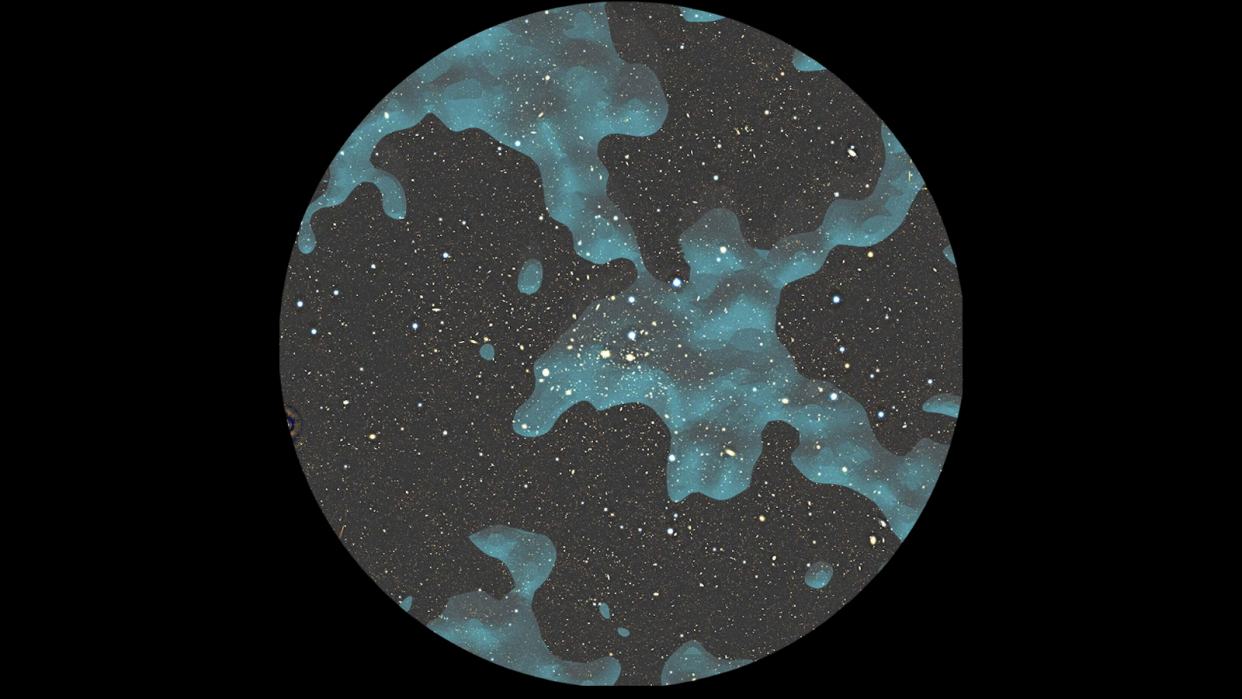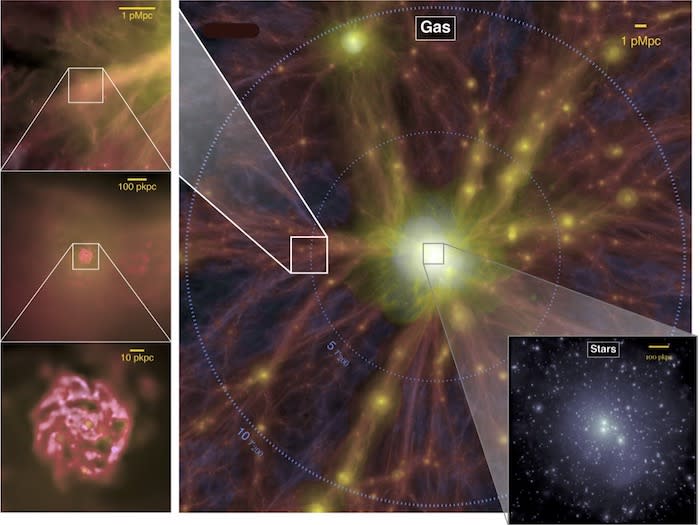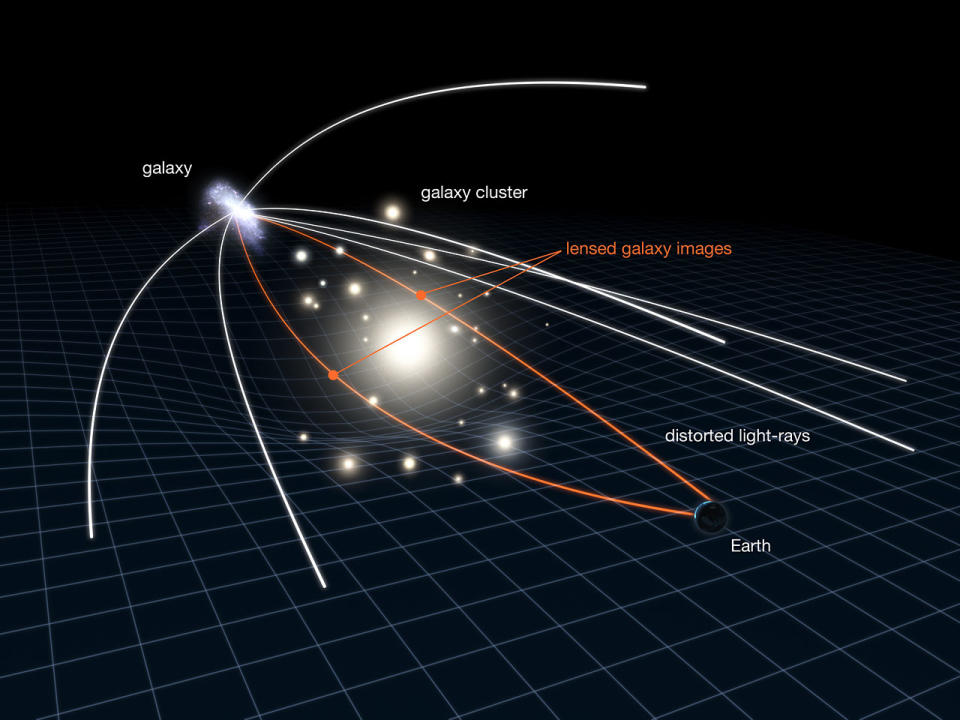Dark matter detected dangling from the cosmic web for 1st time

For the first time, astronomers have detected dark matter hanging from massive filaments that stretch across the universe and form a "cosmic web" that trap galaxies like morning dew on a spiderweb.
Researchers from Yonsei University in Seoul, South Korea, used the Subaru Telescope — an 8.2-meter optical-infrared telescope near the summit of Maunakea in Hawaii — and an effect that gravity has on light to indirectly observe dark matter sitting on cosmic web filaments in the Coma Cluster.
This marks the first-ever detection of dark matter on the cosmic web, and could help confirm how this structure — with strands that run for tens of millions of light-years — has influenced the evolution of the universe.
Also known as Abell 1656, the Coma Cluster is a collection of over a thousand galaxies and is located some 321 million light-years away from us in the direction of the constellation Coma Berenices. Because of this tremendous size and relative proximity, the Coma Cluster is an ideal place for scientists to hunt dark matter on cosmic web strands.
Related: James Webb Space Telescope could target tiny bright galaxies to shine light on dark matter
The cosmic web is a network of filaments, made up of matter, that feed gas into galaxies, helping them grow. This web also helps channel galaxies together, leading them to cluster.
The main filaments of the cosmic web are themselves the walls of galaxy superclusters, with the wall corresponding with the Coma Cluster known as the
"great wall." The great wall was actually the first superlarge structure in the universe to be discovered.
Clusters of galaxies are believed to gather at points where filaments intersect, but these filaments are believed to terminate between galaxies and form what're called "intracluster filaments." Dark matter is expected to run along these cosmic web filaments dangling from those intracluster filaments.

Dark matter as a cosmic scaffold
Though the cosmic web, the largest structure in the universe, has been known about for decades, astronomers have only seen the faint glow of its gas filaments when they have been illuminated by bright regions at the hearts of galaxies powered by feeding supermassive black holes. Those active black holes are called quasars.
Last year, the Keck Cosmic Web Imager, also atop Maunakea, caught the first direct light emanating from wispy web filaments that cross one another and stretch across the darkest corners of space. These are filaments that sit isolated between galaxies, in the largest and most hidden portions of the cosmic web.
"Seeing" the location of dark matter around these cosmic web strands is a completely different story, however.
That's because, despite making up an estimated 85% of all the matter in the universe, dark matter is invisible because it doesn't interact with light like everyday matter that comprises stars and dust does.
Dark matter's dominance over everyday matter also means it dominates the filaments of the cosmic web, forming an invisible scaffold along which the universe's structure takes shape.
However, even though dark matter doesn't interact with light, it does interact with gravity — and this interaction impacts the movement of everyday matter and light that we can see.
The team behind this research took advantage of this concept, using it to detect dark matter on cosmic web filaments threaded throughout the Coma Cluster.

Albert Einstein's 1915 theory of gravity, called general relativity, suggests that objects with mass cause the fabric of spacetime to curve. In turn, the theory explains, what we perceive as gravity arises from this curvature. Furthermore, when light from a background source passes through this curvature, its path gets diverted.
This can lead to background sources appearing to shift in the sky, to be amplified, or in some extreme cases, even to appear at multiple points in the same image. This is called gravitational lensing.
So, using light from galaxies and stars behind the Coma Cluster and assisted by the high sensitivity, high resolution and wide field of view of the Subaru telescope's Hyper Suprime-Cam (HSC), the team detected a weak lensing effect of the dark matter component of intracluster filaments for the first time.
RELATED STORIES
— Something 'fishy' is happening with the Milky Way's dark matter halo
— How the Large Hadron Collider's successor will hunt for the dark universe
— Massive galaxy with no dark matter is a cosmic puzzle
This first-ever detection of dark matter on terminal segments of the cosmic web helps to further confirm the existence of the large-scale structure spreading across the universe.
The team's results were published in January in the journal Nature Astronomy.

